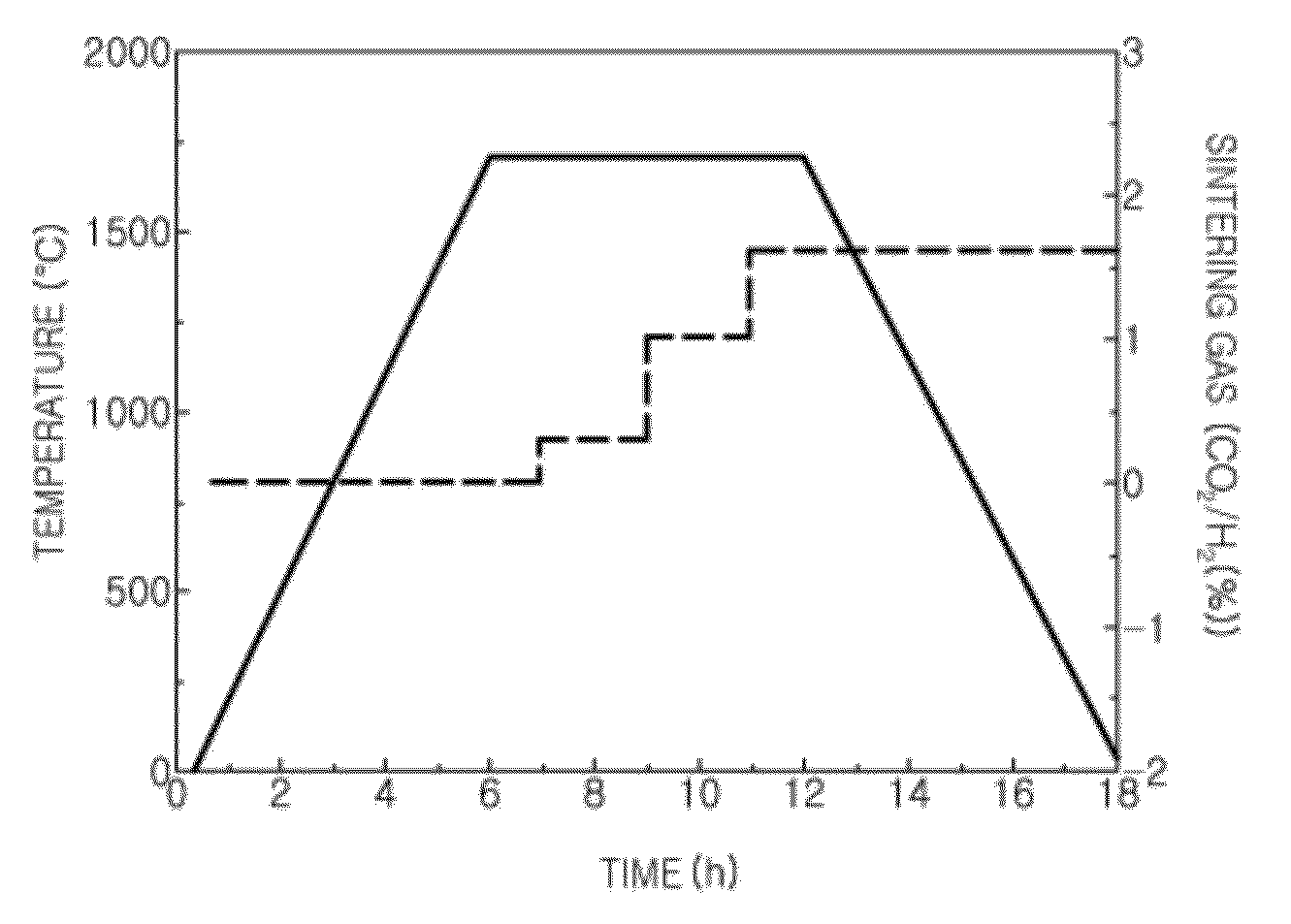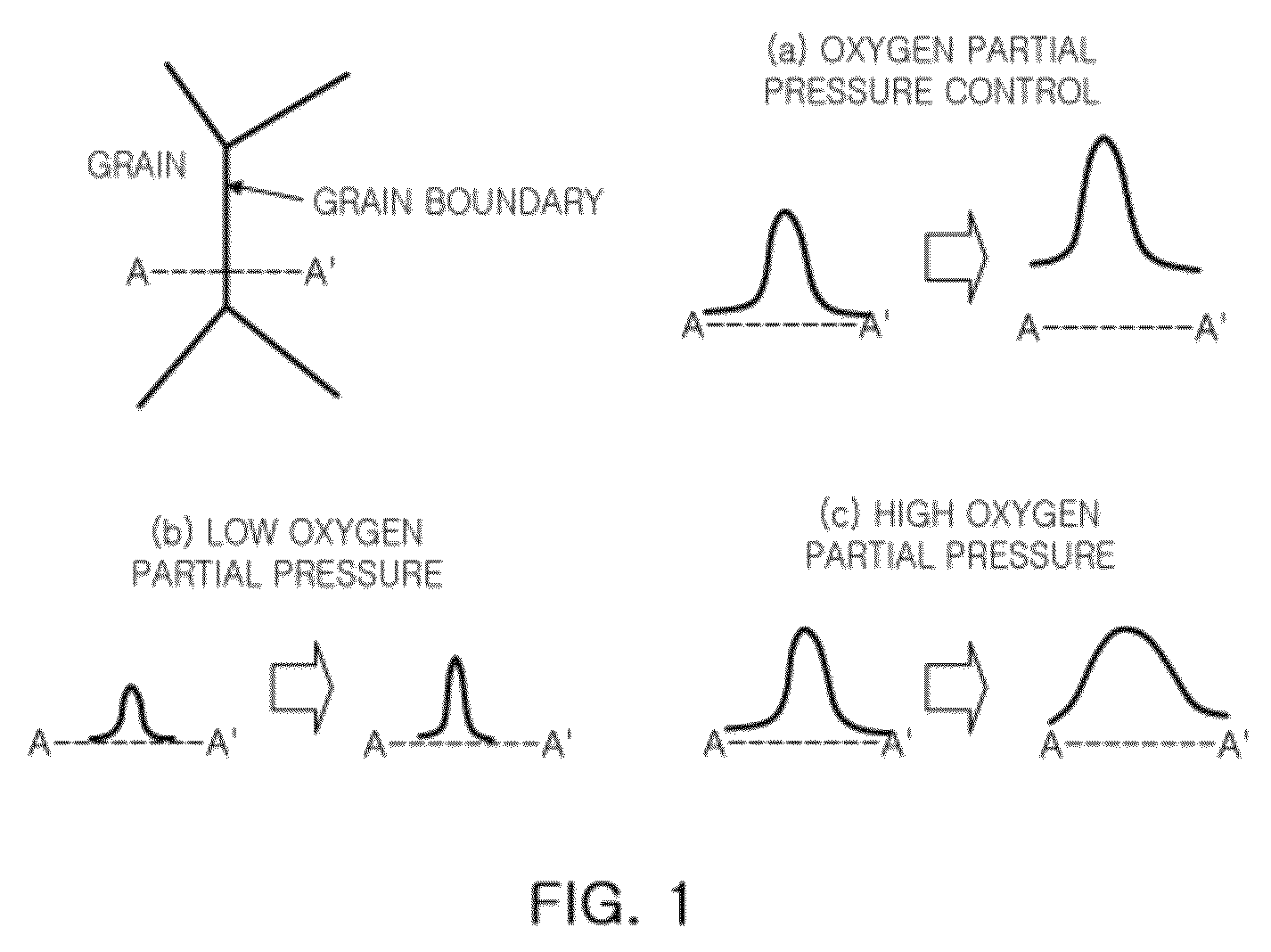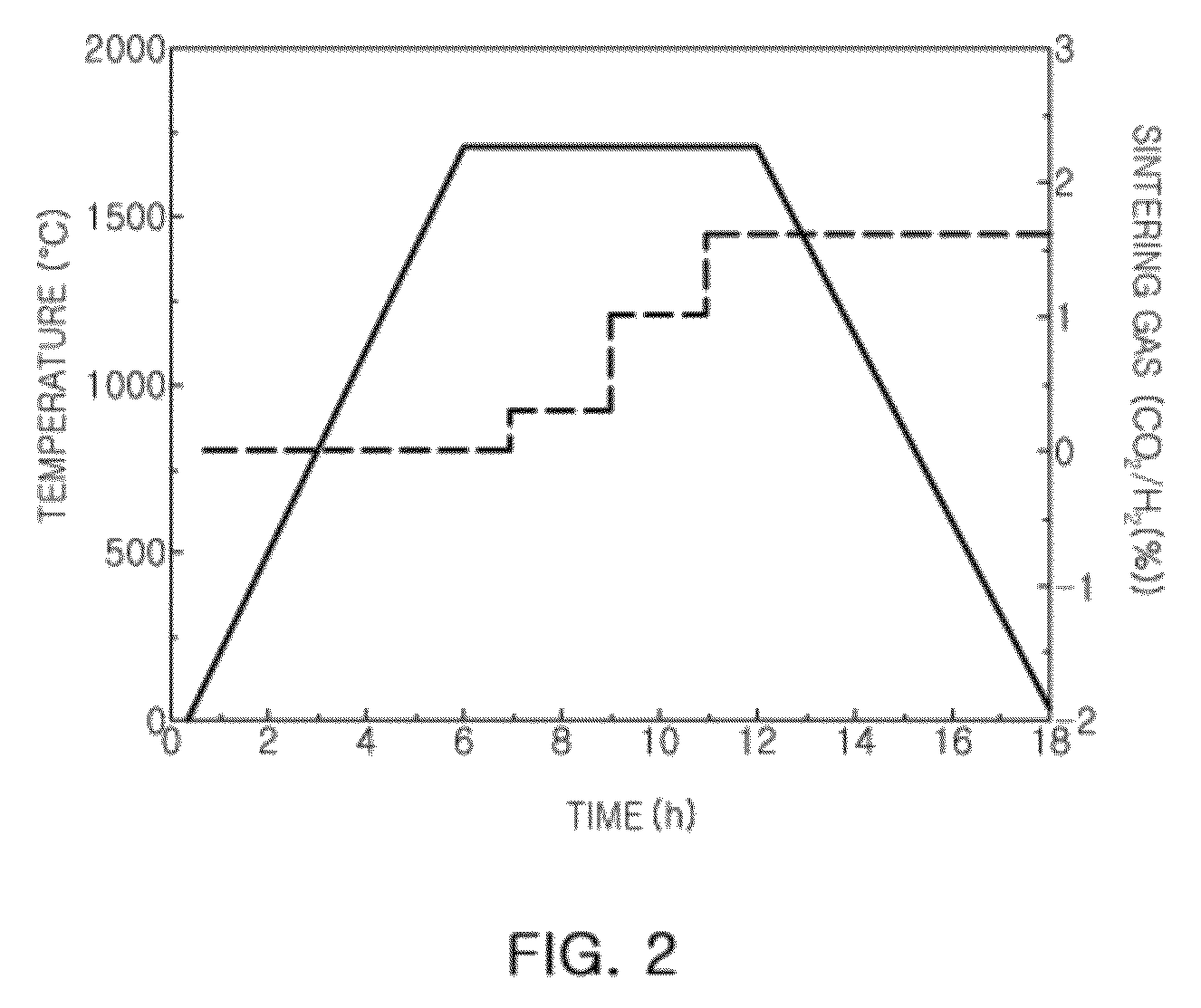Method of controlling solubility of additives at and near grain boundaries, and method of manufacturing sintered nuclear fuel pellet having large grain size using the same
a technology of additives and grain boundaries, which is applied in the direction of nuclear elements, greenhouse gas reduction, and reactor fuel susbtance, etc., can solve the problem that the duration time of liquid phase formed at grain boundaries is too short to contribute to increasing the defect of uo/sub>lattices formed by dissolution has a limitation of contributing to increase the release rate of fission gases, so as to reduce the driving force of grain growth during
- Summary
- Abstract
- Description
- Claims
- Application Information
AI Technical Summary
Benefits of technology
Problems solved by technology
Method used
Image
Examples
example 1
[0044]About 1500 μg / g of Cr2O3 powder based on a Cr / U was added to UO2 powder and was wet ground, and then, Cr2O3 mixed UO2 powder was prepared by drying the ground powder. Cylindrical green pellets were manufactured by press molding the mixed powder at a pressure of about 3 tons / cm2.
[0045]The green pellets were subjected to sintered pellet manufacturing processes of the following Table 1 and then, grain sizes were measured and presented in Table 1. The densities of sintered pellets were measured by Archimedes method. Thereafter, cross-sections of the pellets were polished to observe a pore structure, and also thermally etched to observe a grain structure. The grain size of the pellets was measured by a linear intersection method.
[0046]Also, as an example of the present invention, a sintering process of Example 1 was presented in FIG. 2. In the sintering process of the foregoing green pellets, a hydrogen atmosphere having a low oxygen partial pressure at which Cr2O3 is reduced to Cr...
example 2
[0055]About 500 μg / g of Cr2O3 powder based on a Cr / U was added to UO2 powder and was wet ground, and then, Cr2O3 mixed UO2 powder was prepared by drying the ground powder. Processes of manufacturing green pellets and sintered pellets by using the ground powder were performed using the same method as that of Example 1.
[0056]Densities and grain sizes were measured, and micrographs of grains were observed and the result thereof was presented in FIG. 3C.
[0057]The grain size of Example 2 was measured as 46 μm, which is similar to Comparative Example 3 having a grain size of 45 μm. When Example 2 and Comparative Example 3 are compared, about 500 μg / g of Cr2O3 powder was added in Example 2 while about 1500 μg / g of Cr2O3 powder was added in the case of Comparative Example 3. Therefore, it is confirmed that a similar grain size may be obtained by adding a small additive amount, i.e., about ⅓ of a typical additive amount, when a sintered pellet is manufactured by a manufacturing method accord...
PUM
| Property | Measurement | Unit |
|---|---|---|
| grain size | aaaaa | aaaaa |
| grain size | aaaaa | aaaaa |
| temperature | aaaaa | aaaaa |
Abstract
Description
Claims
Application Information
 Login to View More
Login to View More - R&D
- Intellectual Property
- Life Sciences
- Materials
- Tech Scout
- Unparalleled Data Quality
- Higher Quality Content
- 60% Fewer Hallucinations
Browse by: Latest US Patents, China's latest patents, Technical Efficacy Thesaurus, Application Domain, Technology Topic, Popular Technical Reports.
© 2025 PatSnap. All rights reserved.Legal|Privacy policy|Modern Slavery Act Transparency Statement|Sitemap|About US| Contact US: help@patsnap.com



